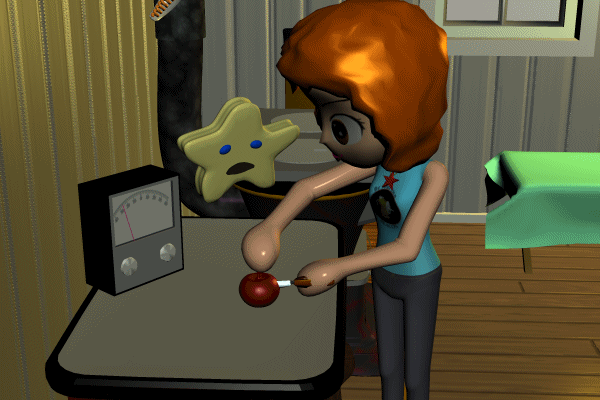Friday, November 20, 2020
Inconclusive but interesting
A couple weeks ago Vintage.es had a short item about Ron Hubbard attempting to show that tomatoes 'scream' when they feel pain. He used his E-meter on a tomato and showed a change in resistance when the knife went through. Well, a change in resistance doesn't imply life. It's just the connected area becoming thinner.
This caught my attention because I had replicated the original E-meter and proved SCARILY that it was not just a meter.
I decided to see what happens with a tomato. I had disassembled the E-meter after the scary experiment, so I used a transistorized VOM (FET-VOM) instead, which is more or less the same ckt with much less applied current than the E-meter.
I gripped a wire with each of the meter's clips, then poked the wires into the ends of the tomato. Resistance was about 500k, and on the voltage scale a very small DC voltage showed, probably a battery effect from the metal electrodes in the acid tomato.
When I touched the tomato with the knife, nothing happened. As soon as I cut in, just a half-inch, the ohmmeter went wild, swinging back and forth ten times then stopping. After that, nothing more happened. I finished cutting all the way through, and predictably the resistance gradually increased to infinity as the contact surface decreased.
 Later with a different tomato I tried checking voltage instead of resistance. Again nothing happened on touching with the knife, but a noticeable small voltage appeared during the cutting then went to zero when I stopped moving the knife.
There's something going on here beyond the obvious and predictable change in resistance, and the obvious battery action from dissimilar materials and acid. The tomato seems to be responding actively to the injury itself, not just to the separation.
Incidentally, this effect wouldn't have been visible with a digital VOM. Analog is VASTLY better for seeing things move. Digital is better for exact measurements of passive components.
Later with a different tomato I tried checking voltage instead of resistance. Again nothing happened on touching with the knife, but a noticeable small voltage appeared during the cutting then went to zero when I stopped moving the knife.
There's something going on here beyond the obvious and predictable change in resistance, and the obvious battery action from dissimilar materials and acid. The tomato seems to be responding actively to the injury itself, not just to the separation.
Incidentally, this effect wouldn't have been visible with a digital VOM. Analog is VASTLY better for seeing things move. Digital is better for exact measurements of passive components.
 Later with a different tomato I tried checking voltage instead of resistance. Again nothing happened on touching with the knife, but a noticeable small voltage appeared during the cutting then went to zero when I stopped moving the knife.
There's something going on here beyond the obvious and predictable change in resistance, and the obvious battery action from dissimilar materials and acid. The tomato seems to be responding actively to the injury itself, not just to the separation.
Incidentally, this effect wouldn't have been visible with a digital VOM. Analog is VASTLY better for seeing things move. Digital is better for exact measurements of passive components.
Later with a different tomato I tried checking voltage instead of resistance. Again nothing happened on touching with the knife, but a noticeable small voltage appeared during the cutting then went to zero when I stopped moving the knife.
There's something going on here beyond the obvious and predictable change in resistance, and the obvious battery action from dissimilar materials and acid. The tomato seems to be responding actively to the injury itself, not just to the separation.
Incidentally, this effect wouldn't have been visible with a digital VOM. Analog is VASTLY better for seeing things move. Digital is better for exact measurements of passive components.Labels: Grand Blueprint
